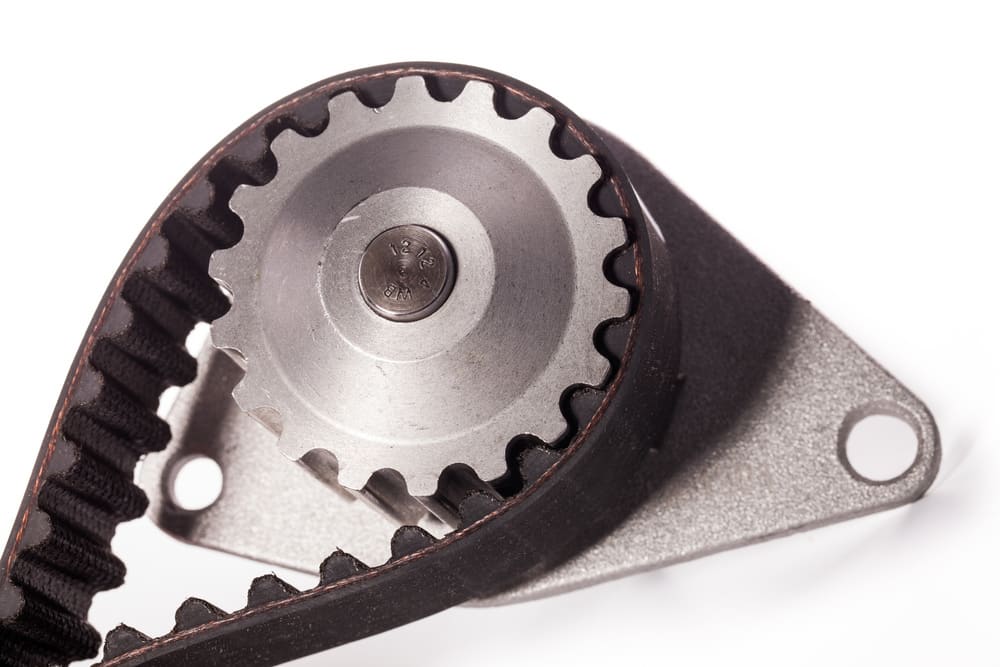

The timing belt is a belt made of rubber that keeps your camshaft and your crankshaft synchronized so that your valve timing is always right. Some vehicles have a timing chain instead of a belt, but it serves the same purpose. If your valve timing is off, your engine won’t run properly. In fact, it may not run at all. The belt also regulates the power steering and the water pump.
If you have timing belt problems, your mechanic can identify the trouble and will probably recommend that it be replaced.
How the timing belt works
In the four-stroke engine, there are four strokes, or phases. They are:
The intake stroke: The piston moves downward, and the intake valve opens to allow the mixture of air and fuel to enter the cylinder. At this stage, the exhaust valve remains closed.
The compression stroke: The piston moves up and compresses the fuel and air mixture. All valves are closed.
The combustion stroke: The piston moves down, allowing the spark plug to ignite the fuel and air mixture, delivering power to the vehicle. All valves are closed.
The exhaust stroke: The exhaust valve opens, allowing excess fuel and air to leave the engine. The intake valve is closed.
While all this is going on, the timing belt works to turn the camshaft pulley (some vehicles have two camshaft pulleys) in conjunction with the crankshaft pulley. A bad timing belt can cause the camshaft and crankshaft to be out of synchronization, and this can be catastrophic for the car’s engine. It throws the valve timing off, and you can end up with bent valves, bent piston rods, or completely destroyed pistons.
You may notice problems in time. Timing belt noise can be a red flag – it usually sounds like squeaking in the belt, or rattling if you have a timing chain. A timing belt problem should never be ignored, so watch for signs that there could be something wrong. The last thing you want is to have to rebuild your engine. As a general rule of thumb, you should plan on replacing the belt every 60,000 to 90,000 miles, or at least have it checked.
For this reason, your manufacturer will have recommendations as to how often your timing belt should be replaced. Generally, around the 80,000 mile mark it is prudent to get a mechanic to replace your timing belt to ensure that the engine continues to run efficiently.



